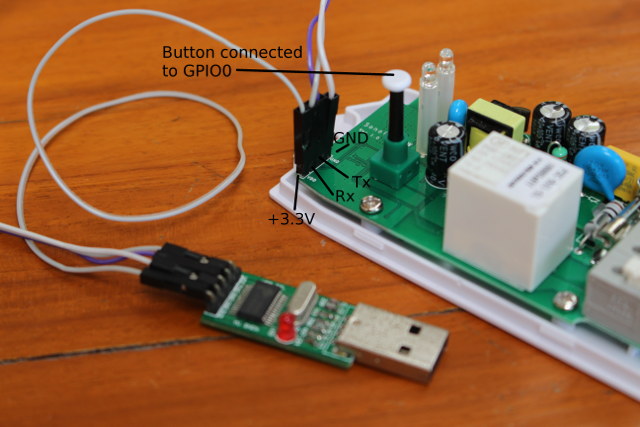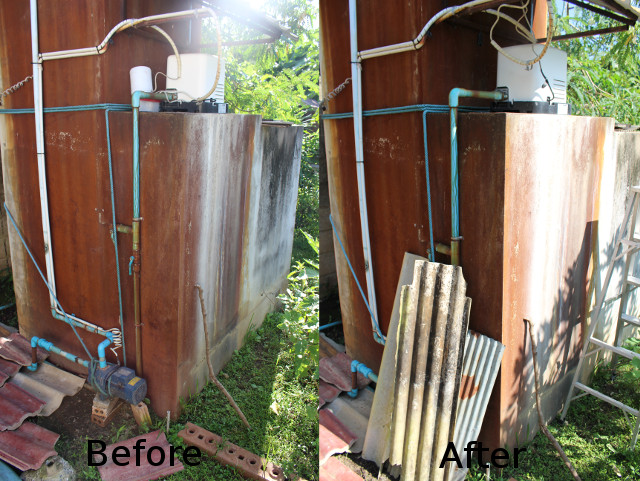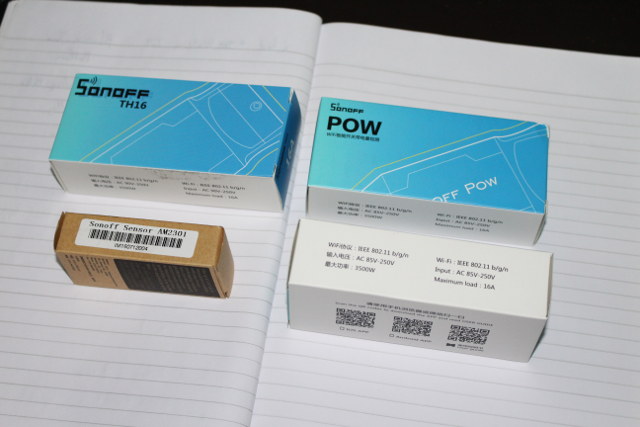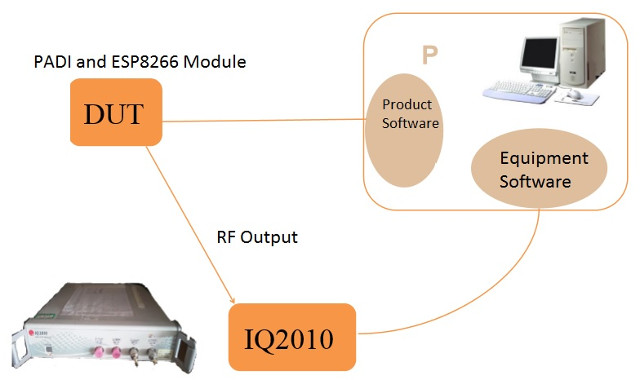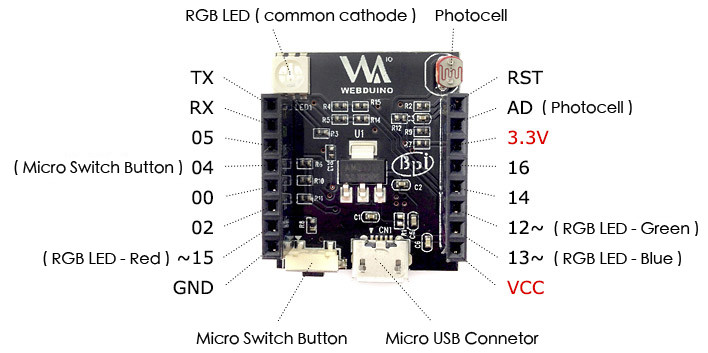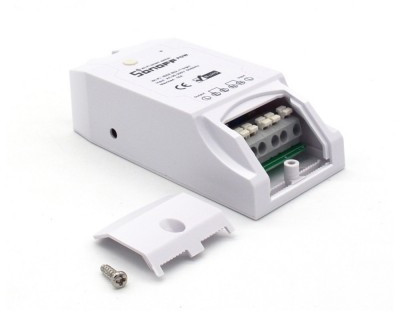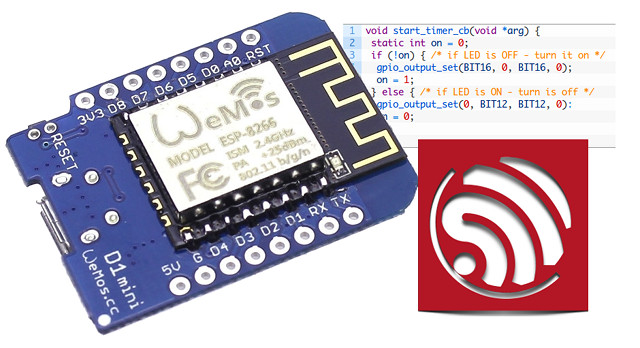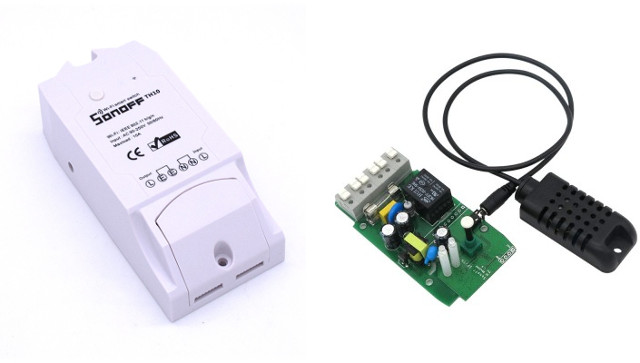ITEAD Studio Sonoff family is comprised of various inexpensive ESP8266 WiFi power switch, and the company sent me two of their latest CE certified models with Sonoff TH16 + external temperature & humidity probe, and Sonoff POW to measure power consumption. I checked the hardware is the first part of the review, and used Sonoff TH16 to control a water pump with the stock firmware and Ewelink Android app in the second part. It works reasonably well, but it relies on the cloud, so if you lose your Internet connection or the service closed, you can’t control the relay manually anymore. Luckily, the UART pins are exposed on Sonoff switches so you can solder a 4-pin header and connect a USB to TTL to flash your own firmware. Please don’t connect Sonoff devices to the mains when programming them, it’s very dangerous, instead the USB to TTL board will power […]
Getting Started with Sonoff TH16 ESP8266 Relay and Sensor using the Stock Firmware and eWelink Android App
Sonoff TH16 is a WiFi relay device powered by Espressif ESP8266 WiSoC, able to handle a load up to 16A (3500Watts @ 220V), and including a jack for sensors. The company recently sent me a sample together with Sonoff AM2301 temperature and humidity sensor, and Sonoff POW power meter device, and in the first part of my Sonoff review I checked out the hardware for all three items. In the second part, I’ll report my experience with Sonoff TH16 and the temperature sensor with a practical example, as I’ve installed it to control a groundwater pump. What you see above is a picture of my house water tank with two pumps, the white one keep the pressure in the taps and is always on, and the blue one pumps the water from the ground and is the one I’m going to control. Over the last year or so, I’ve tried […]
Sonoff POW and Sonoff TH16 WiFi Relays Review – Part 1: The Hardware
Sonoff TH16 is a WiFi 16A relay that can take external sensors via a 2.5mm jack, while Sonoff Pow is a WiFi relay capable of measuring power consumption. Both have been designed by ITEAD Studio, and feature Espressif ESP8266 WiSoC. The company sent me both items for review, and I’ll start by checking out the hardware a little more closely than what is possible during the product announcement. I received Sonoff TH16 together with Sonoff AM2301 temperature and humidity sensor, which I’ll use to use to control an outdoor water pump and gather temperature and humidity data, as well as two Sonoff POW relays,which I plan to use to measure power consumption in my office, both from the power outlets and my aircon. All three WiFi relays support 3500 Watts, and 85 to 250V input. The packages have three QR codes for eWeLink iOS app, the Android app (coolkit.apk), and […]
Realtek RTL8710AF (PADI IoT Stamp) vs Espressif ESP8266 (ESP-07) WiFi RF Performance Comparison
After I posted about PADI IoT Stamp IoT kit based on RTL8710AF ARM Cortex M3 WiSoC yesterday, I was soon asked whether I could compare the RF performance against ESP8266 modules like ESP-12. I don’t have any equipment to do this kind of test, except for some simple test like testing range with WiFi Analyzer app, but I remember Pine64 told me they had some comparison data a little while, and accepted to share their results. The test setup is comprised of Litepint IQ2010 multi-communication connectivity test system and PC software, as well as the device under test (DUT) with PADI IoT Stamp (version with u.FL antenna connector) and ESP-07 ESP8266 module as a u.FL connector is required to connect the test system. They’ve tested 802.11b, 802.11g, and 802.11n, but for IoT projects 802.11b is the most important as usually long range is more important than data rate. Test results […]
Webduino Smart ESP8266 Board is Designed to be Programmed via Websocket and Blockly Editor
Webduino Smart board reminds me of Witty ESP8266 board with its RGB LED and photocell sensor, but the design is a little different, and does not come with an extra USB to TTL board, as it’s designed to be programmed over the air using Blockly Editor. Webduino Smart specifications: WiFi Module – AI Thinker ESP-12F module with Espressif ESP8266 WiSoC Connectivity – WiFi 802.11 b/g/n 2x 8-pin headers with GPIOs, ADC (Connected to Photocell), UART, VCC, 3.3V, GND, and Reset. USB – 1x micro USB port for power Misc – Photo resistor, RGB LED, micro switch button for firmware upgrade (connected to GPIO 4) Dimensions – 3 x 2.5 cm (See comparison to AA and AAA batteries below) While Witty board was mostly targeting mainland China market with all documentation in Chinese, Webduino Smart does have some documentation in English, and is made by Banana Pi team (SinoVoIP). The default […]
Sonoff Pow is a $10.50 ESP8266 WiFi Relay Box that also Measures Power Consumption
In a recent article about Sonoff TH10/TH16 WiFi relays with sensor probes support, we also saw that ITEAD Studio started to have a nice family of home automation products. The company has now added one more item to the Sonoff family with Sonoff Pow support up to 16A/3500W input, and the first to also include power consumption measurements. Sonoff Pow specifications: SoC – Espressif ESP8266 Tensila L106 32-bit MCU up to 80/160 MHz with WiFi Connectivity – 802.11 b/g/n WiFi with WPA/WPA2 support Relay – HF152F-T relay with 90 to 250 VAC input, up to 16A (3500 Watts) Terminals – 6 terminal for mains and load’s ground, live and neutral signals. Programming – Unpopulated 4-pin header for flashing external firmware Misc – LEDs for power and WiFi status, power consumption circuitry with 1% accuracy. Dimensions – 114 x 52 x 32mm Temperature range – -40 ℃ to 125 ℃ The […]
How to Write ESP8266 Firmware from Scratch (using ESP Bare Metal SDK and C Language)
CNXSoft: This is a guest post by Alexander Alashkin, software engineer in Cesanta, working on Mongoose Embedded Web Server. Espressif’s ESP8266 had quite an evolution. Some may even call it controversial. It all started with ESP8266 being a WiFi module with a basic UART interface. But later it became clear that it’s powerful enough for embedded system. It’s essentially a module that can be used for running full-fledged applications. Espressif realized this as well and released an SDK. As first versions go, it was full of bugs but since has become significantly better. Another SDK was released which offered FreeRTOS ported to ESP. Here, I want to talk about the non-OS version. Of course, there are third-party firmwares which offer support for script language to simplify development (just Google for these), but ESP8266 is still a microchip (emphasis on MICRO) and using script language might be overkill. So what we […]
Sonoff TH10/16 WiFi Relays Support Temperature and Humidity Probes
Sonoff are dirt cheap WiFi AC/DC relay systems based on ESP8266 selling for about $5 with board and case. They are made by ITEAD Studio, and the company has now new versions supporting up to 16A @ 250V, and with a 2.5mm connector to connect external temperature and humidity probes. Two models are available Sonoff-TH10 (10A max) and Sonoff-TH16 (16A max) with the following specifications: SoC – Espressif ESP8266 Tensila L106 32-bit MCU up to 80/160 MHz with WiFi Connectivity – 802.11 b/g/n WiFi with WPA/WPA2 support Relay Sonoff-TH10 – HK3FF-DC5V-SHG supporting 90 to 250 VAC input, up to 10A (2200 Watts) Sonoff-TH16 – Hongfa HF152F-T supporting 90 to 250 VAC input, up to 16A (3500 Watts) Terminals – 6 terminal for mains and load’s ground, live and neutral signals. Misc – 4-pin 2.5mm jack for external probes, LEDs for power and WiFi status Dimensions – PCB: 89.1 x 45.0 […]


